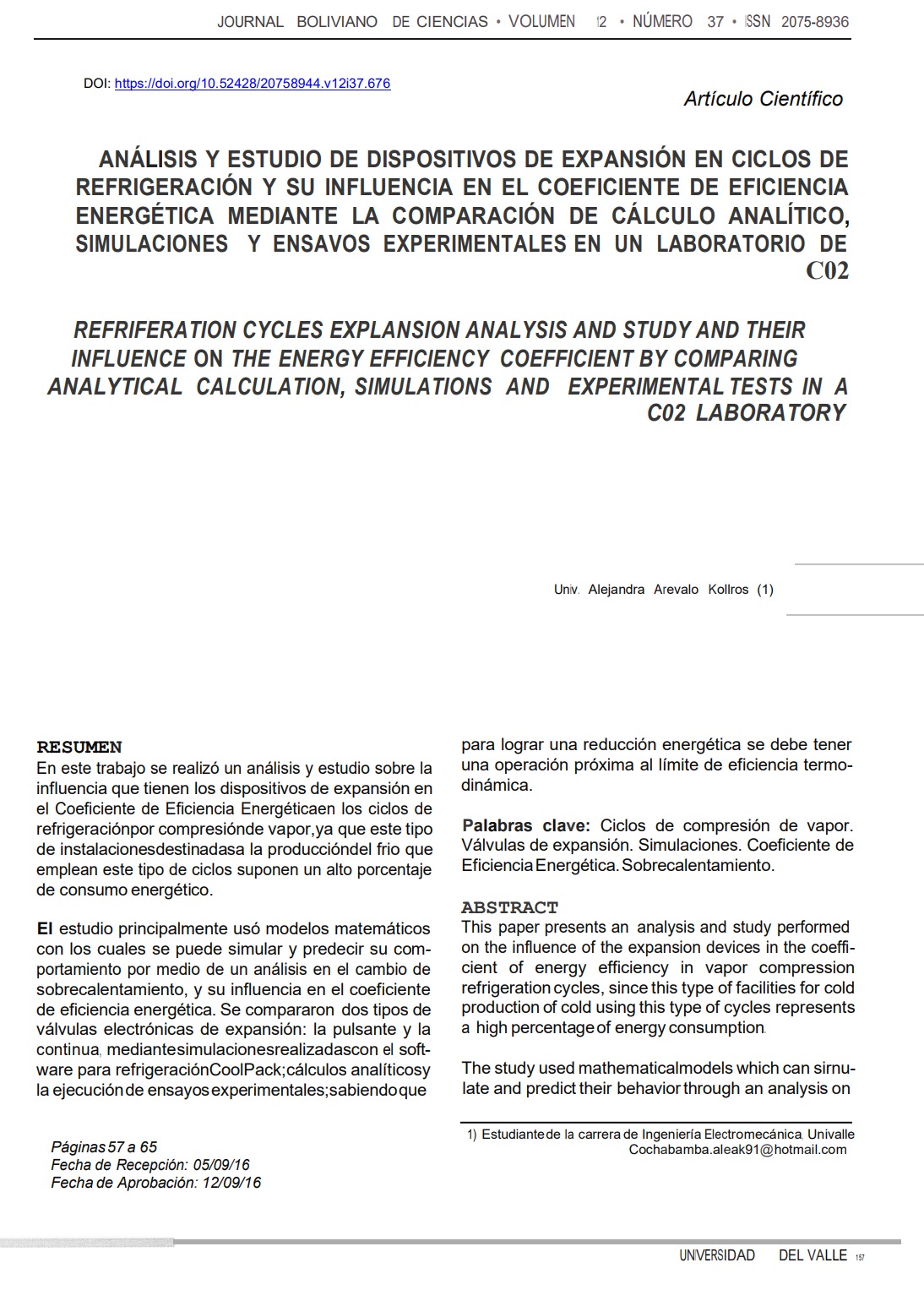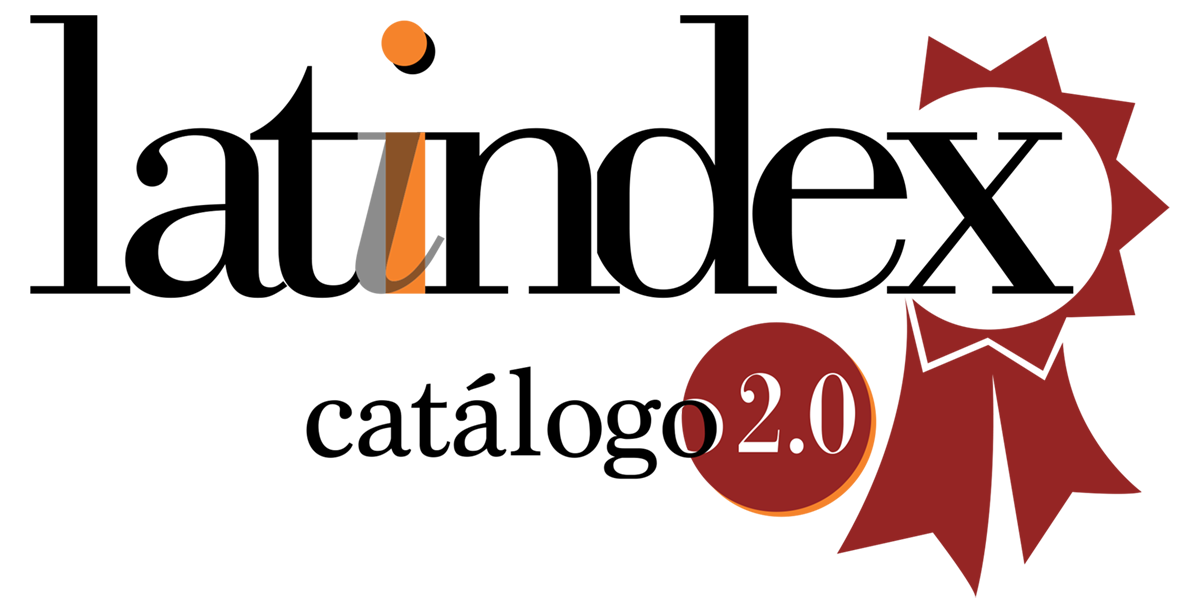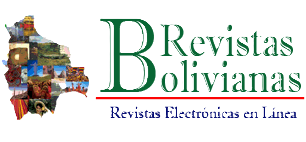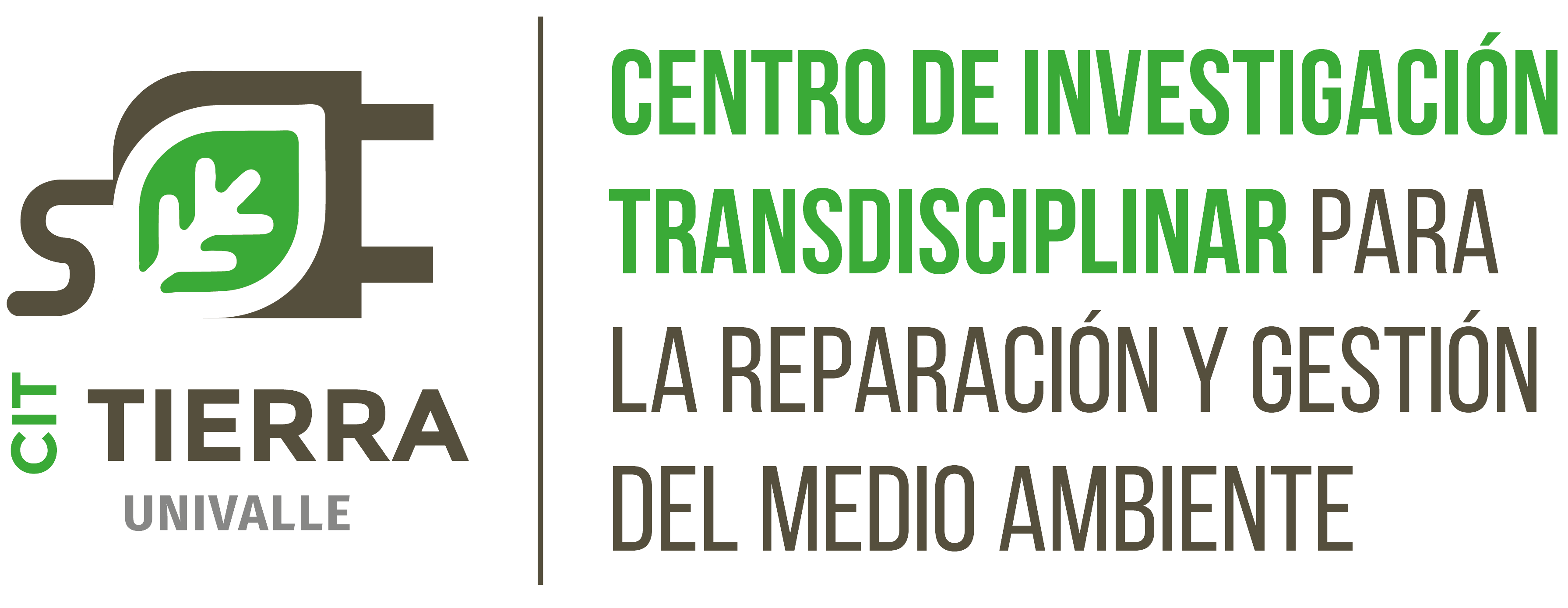Refrigeration Cycles Expansion Analysis and Study and their Influence on the Energy Efficiency Coefficiient by Comparing Analytical Calculation, Simulations and Experiental Tests in a CO2 Laboratory
DOI:
https://doi.org/10.52428/20758944.v12i37.676Keywords:
Vapor compression cycles, Expansion valves, Simulations, Energy Efficiency Ratio, SuperheatAbstract
This paper presents an analysis and study performed on the influence of the expansion devices in the coefficient of energy efficiency in vapor compression refrigeration cycles, since this type of facilities for cold production of cold using this type of cycles represents a high percentage of energy consumption. The study used mathematical models which can sirnulate and predict their behavior through an analysis onthe change of overheating, and its influence on the energy efficiency coefficient. Two types of electronic expansion valves were compared: the pulsed and continuous, through simulations with the software for refrigeration CoolPack; analytical calculations and
execution of experimental tests; knowing that to achieve an energy reduction next operation should have a limit of thermodynamic efficiency.
Downloads
References
W. WHITMAN, W. JOHNSON, J. TOMCZYK Y E. SILBERSTEIN, Refrigeration & air conditioning technology, 7th ed., New York: Delmar, Cengage Learning, 2012.
A. RAMESH, Refrigeration and air conditioning, Nueva Delhi: PHI Learning Prívate Limited, 2010.
L. PEREZ-LOMBARD, J. ORTIZ Y C. POUT, «A review on buildings energy consumption information,» Elsevier, pp. 394-398, 2007. https://doi.org/10.1016/j.enbuild.2007.03.007 DOI: https://doi.org/10.1016/j.enbuild.2007.03.007
SWISS FEDERAL OFFICE OF ENERGY, «Bundemsamt für Energie, » 17 Noviembre 2013.
P. WEISSENBORN, «Energie sparen in der gewerbekálte,» Berlín, 2008.
S. TURNS, Thermodynamics: Concepts and Applications, Nueva York: Cambridge University Press, 2006.
G. J. V. WYLEN, Fundamentos de termodinamica, 2nd ed., Michigan: Limusa Wiley, 2000.
ZHAW-IEFE, Übersicht van Hydrauliksystems, Winterthur, 2014.
ZHAW-IEFE, Organisation der lnformatiksysteme im Kaltelabor TM U1 .42, Winterthur, 2014.
P. CHAIWONGSA Y S. WONGWISES, «Experimental study on R-134 refrigeration system usign a two phase ejector as an expansion device,» Elsevier Ud., 2007. IKET, (Hrsg)., Pohlmann Taschenbuch der Káltetechnik, 21th ed., Berlin: VDE Verlag, 2013.
l. BELL, «Performance lncrease of carbon dioxide Refrigeration Cycle with the Addition of Parallel Compression Economization,» de 6th IIR Gustav Lorenzen Natural Working Fluids, September 2004.
S. GIROTTO, «Refrigeration systems far warm climates using only C02 as a working tluid,» Natural refrigerants - Sustainable ozone- and climate-friendly alternatives to HCFCs, pp. 287-301, 2008.
M. LAPUERTA Y O. ARMAS, Frío industrial y aire acondicionado, Real: Universidad de Castilla-La Mancha, 2012.
O. HOUGEN, K. WATSON Y R. RAGATZ, Principios de los procesos quimicos: Termodinamica, vol. 11, Barcelona: Reverte, 2005.
BUNDESAMT FÜR ENERGIE BFE, «Wárrnepumpen und Kálte,» de Energieforschung 2012, Bern, 2012.
M.-H. KIM, J. PETTERSEN Y C. W. BULLARD, «Fundamental process and system design issues in C02 vapor compression systems,» Progress in energy and combustion science 30, pp. 119-174, 2004. https://doi.org/10.1016/j.pecs.2003.09.002 DOI: https://doi.org/10.1016/j.pecs.2003.09.002
SPORLAN, «Válvulas de expansion termoestatica,» Parker Hoffinin Corporation, Washington, 2006.
SPORLAN, «Válvulas de expansion electricas,» Parker Hoffinin Corporation, Washington, 201 O.
TEP ENERGY GMBH, PROGNOS AG, INFRAS AG, «Analyse des schweizerischen Energieverbrauchs 2000 - 2013 nach Verwendungszwecken,» 2014.
ALFA LAVAL, «Heating and cooling solutions from Alfa Laval,» 2012-2013.
P. RAPIN Y P. JACQUARD, Instalaciones frigorificas, vol. 11, Barcelona: Marcombo S.A., 1997.
ENERGY INFORMATION ADMISNISTRATION Y ENERGY INTERNATIONAL OUTLOOK, «Montly Energy Review,» 2014

Downloads
Published
How to Cite
Issue
Section
License
Copyright (c) 2016 Alejandra Arevalo Kollros

This work is licensed under a Creative Commons Attribution 4.0 International License.
Authors who publish with this journal agree to the following terms:
- Authors retain copyright and grant the journal right of first publication with the work simultaneously licensed under a Creative Commons Attribution License 4.0 that allows others to share the work with an acknowledgement of the work's authorship and initial publication in this journal.
- Authors are able to enter into separate, additional contractual arrangements for the non-exclusive distribution of the journal's published version of the work (e.g., post it to an institutional repository or publish it in a book), with an acknowledgement of its initial publication in this journal.
- Authors are permitted and encouraged to post their work online (e.g., in institutional repositories or on their website) prior to and during the submission process, as it can lead to productive exchanges, as well as earlier and greater citation of published work.














